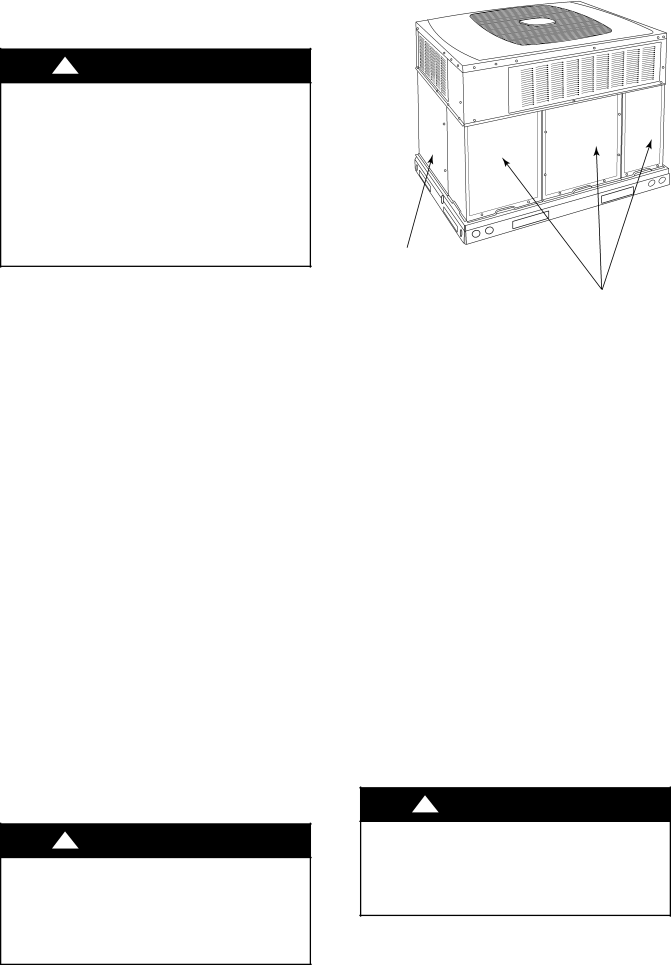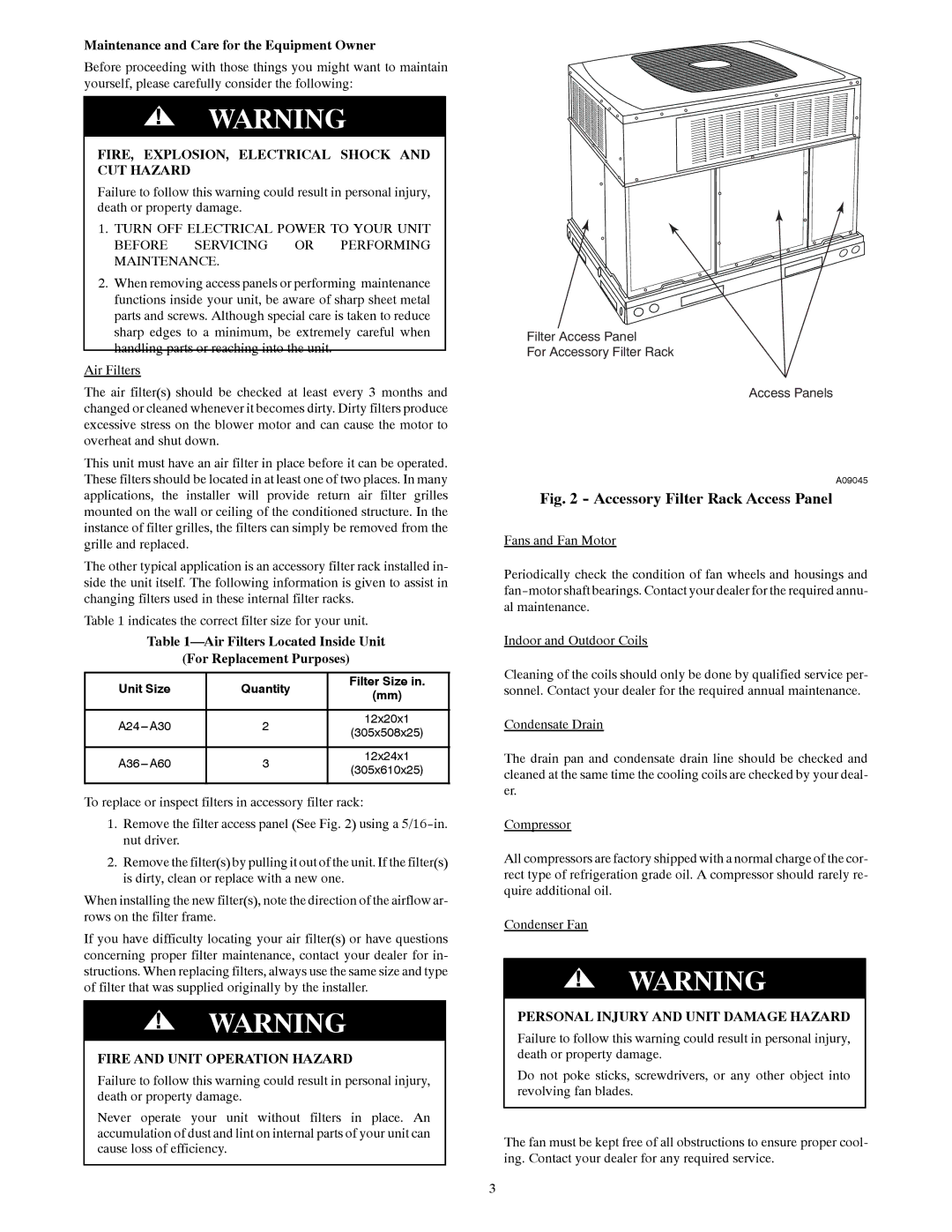
Maintenance and Care for the Equipment Owner
Before proceeding with those things you might want to maintain yourself, please carefully consider the following:
!WARNING
FIRE, EXPLOSION, ELECTRICAL SHOCK AND CUT HAZARD
Failure to follow this warning could result in personal injury, death or property damage.
1.TURN OFF ELECTRICAL POWER TO YOUR UNIT BEFORE SERVICING OR PERFORMING MAINTENANCE.
2.When removing access panels or performing maintenance functions inside your unit, be aware of sharp sheet metal parts and screws. Although special care is taken to reduce sharp edges to a minimum, be extremely careful when handling parts or reaching into the unit.
Air Filters
The air filter(s) should be checked at least every 3 months and changed or cleaned whenever it becomes dirty. Dirty filters produce excessive stress on the blower motor and can cause the motor to overheat and shut down.
This unit must have an air filter in place before it can be operated. These filters should be located in at least one of two places. In many applications, the installer will provide return air filter grilles mounted on the wall or ceiling of the conditioned structure. In the instance of filter grilles, the filters can simply be removed from the grille and replaced.
The other typical application is an accessory filter rack installed in- side the unit itself. The following information is given to assist in changing filters used in these internal filter racks.
Table 1 indicates the correct filter size for your unit.
Table 1—Air Filters Located Inside Unit
(For Replacement Purposes)
Unit Size | Quantity | Filter Size in. | |
(mm) | |||
|
| ||
|
|
| |
2 | 12x20x1 | ||
(305x508x25) | |||
|
| ||
|
|
| |
3 | 12x24x1 | ||
(305x610x25) | |||
|
| ||
|
|
|
To replace or inspect filters in accessory filter rack:
1.Remove the filter access panel (See Fig. 2) using a
2.Remove the filter(s) by pulling it out of the unit. If the filter(s) is dirty, clean or replace with a new one.
When installing the new filter(s), note the direction of the airflow ar- rows on the filter frame.
If you have difficulty locating your air filter(s) or have questions concerning proper filter maintenance, contact your dealer for in- structions. When replacing filters, always use the same size and type of filter that was supplied originally by the installer.
!WARNING
FIRE AND UNIT OPERATION HAZARD
Failure to follow this warning could result in personal injury, death or property damage.
Never operate your unit without filters in place. An accumulation of dust and lint on internal parts of your unit can cause loss of efficiency.
Filter Access Panel
For Accessory Filter Rack
Access Panels
A09045
Fig. 2 - Accessory Filter Rack Access Panel
Fans and Fan Motor
Periodically check the condition of fan wheels and housings and
Indoor and Outdoor Coils
Cleaning of the coils should only be done by qualified service per- sonnel. Contact your dealer for the required annual maintenance.
Condensate Drain
The drain pan and condensate drain line should be checked and cleaned at the same time the cooling coils are checked by your deal- er.
Compressor
All compressors are factory shipped with a normal charge of the cor- rect type of refrigeration grade oil. A compressor should rarely re- quire additional oil.
Condenser Fan
!WARNING
PERSONAL INJURY AND UNIT DAMAGE HAZARD
Failure to follow this warning could result in personal injury, death or property damage.
Do not poke sticks, screwdrivers, or any other object into revolving fan blades.
The fan must be kept free of all obstructions to ensure proper cool- ing. Contact your dealer for any required service.
3
